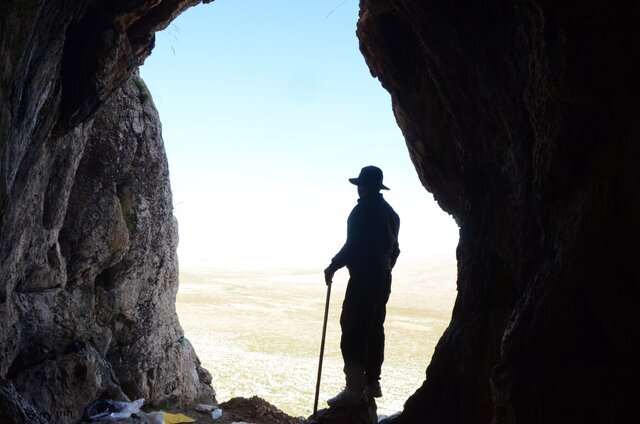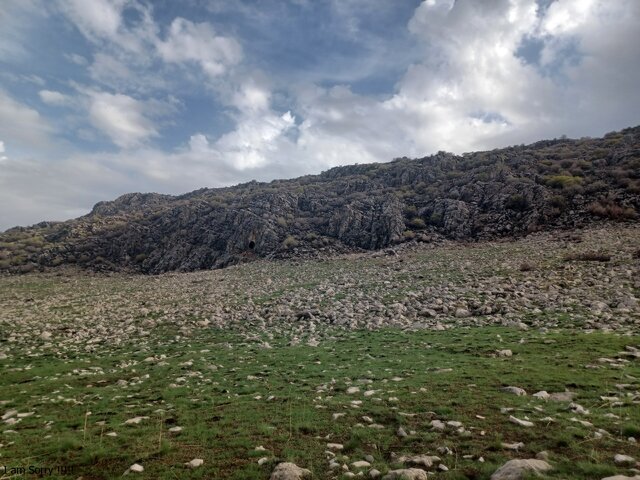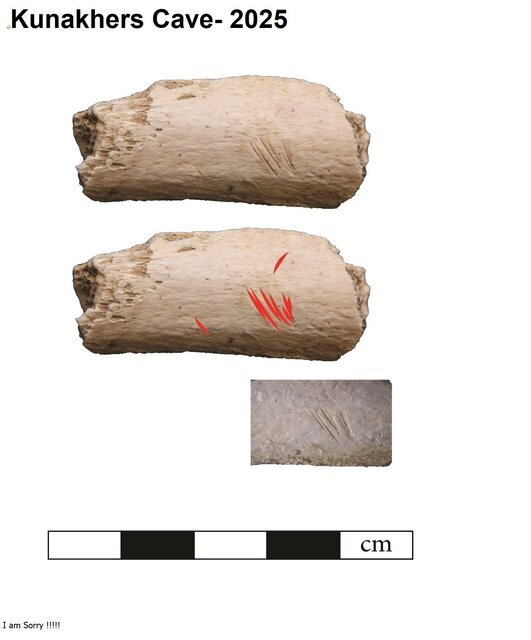Traces of Neanderthal presence discovered in cave, western Iran

TEHRAN – Archaeologists have uncovered evidence of Neanderthal habitation in Kunakhera Cave, located in the Zagros Mountain range in western Iran’s Kermanshah province.
The discovery stems from an emergency excavation project aimed at rescuing the site from ongoing damage caused by illegal digging and natural degradation.
According to Nemat Hariri, the head of the archaeological team leading the emergency probe, the remains found at the site confirm Neanderthal use of the cave approximately 40,000 to 80,000 years ago. “Due to extensive destruction in recent years, we initiated this project with authorization from the Cultural Heritage and Tourism Research Institute and support from the provincial heritage department,” Hariri stated.
The project had two main objectives: the rescue and documentation of cultural and biological remains at risk of destruction, and the pursuit of scientific data related to the region’s Paleolithic history. The cave’s specific location places it in proximity to other significant archaeological sites, including the well-known Bawa-Yawan rock shelter.

Initial findings revealed Mousterian-type stone tools and sedimentary layers strikingly similar to those found in Bawa-Yawan shelter, a known Neanderthal site. These findings align with the hypothesis that Neanderthal communities repeatedly used the site during the Late Pleistocene, even in the presence of persistent snow lines at around 1,800 meters.
“The emerging evidence is consistent with recent scientific shifts in how Neanderthals are viewed—not as primitive or biologically limited, but as complex hominins with sophisticated cultural, cognitive, and survival capabilities,” Hariri explained.
Artifacts discovered include cut-marked animal bones showing signs of heating, likely from hearths used by Neanderthal groups. The bones represent a range of fauna such as cave bears, equids, bovids, caprids, jackals, rabbits, and even freshwater turtles—suggesting a diverse and adaptive diet among these early humans.

Moreover, the presence of hearths and ash layers further underscores the cave’s repeated and organized use as a shelter. “This emergency excavation is not only vital for preserving the remaining scientific evidence but also contributes significantly to our understanding of Neanderthal life in central western Zagros,” Hariri added.
The findings from Kunakhera Cave may reshape perceptions of early human life in the highlands of Iran and underscore the region’s importance in the broader narrative of human evolution.
Glimpses of Bawa Yawan, a remarkable Palaeolithic shelter
One of the oldest known references to the human being can be traced in Bawa Yawan, a rock shelter situated in the Kermanshah region of western Iran.
According to the top Iranian archaeologist, Saman Heydari-Guran, rock art discovered in Bawa Yawan, is the oldest evidence of human ethology based on signs in the Iranian plateau.
Those rock arts open us a direct window to the complex human behavior that is difficult to obtain in other ancient remains of the late Pleistocene era, Heydari-Guran has said.
“Paleolithic rock art has been discovered in various forms across the globe, including rock-carved portraits and abstract signs. They have always been an important and, at the same time, fascinating topic for archaeologists and anthropologists.”
“Now, Paleolithic research in Kermanshah has led to the very important discovery of rock motifs in one of the most key places in this region,” the archaeologist said.
Conducting multi-faceted research shows, Bawa Yawan motifs are comparable with European Paleolithic rock motifs in terms of form and content, he said.
“Moreover, based on a statistical analysis, motifs discovered at Bawa Yawan can be related to the phenomenon of having children and recording it.”
The closest layer associated with rock art at Bawa Yawan is estimated to date from 13,400 years ago, the archaeologist added.
The long-term presence of Neanderthals in western Eurasia, according to the article, suggests that they were a resilient hominin subspecies. Archaeological records and fossil evidence show that towards their extinction, their territory was dramatically limited for various reasons, including restricted food resources.
AM
Leave a Comment